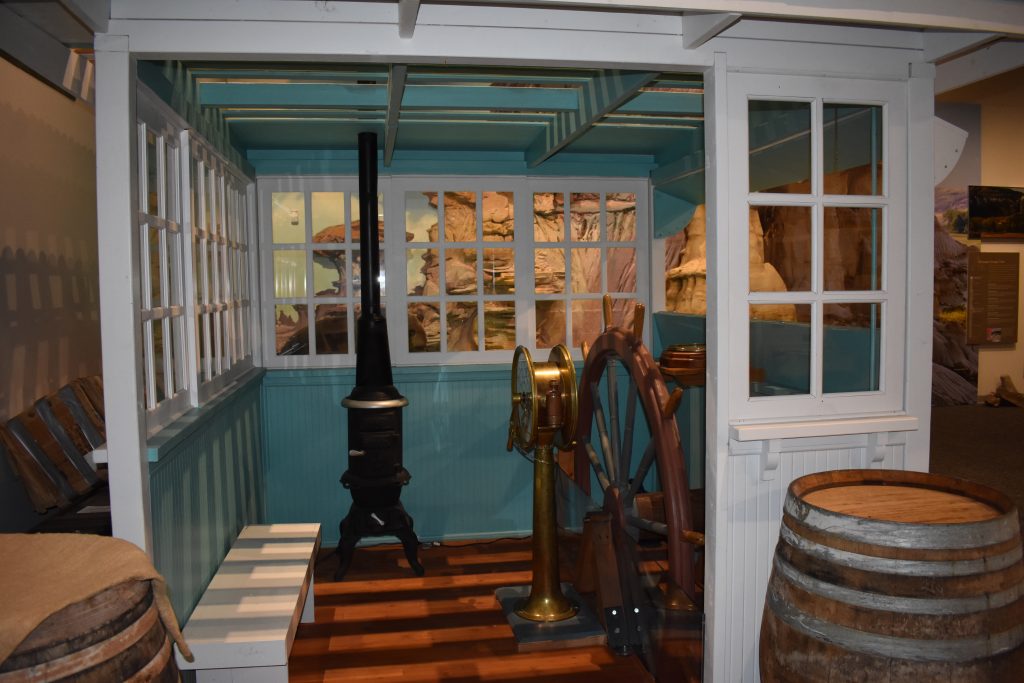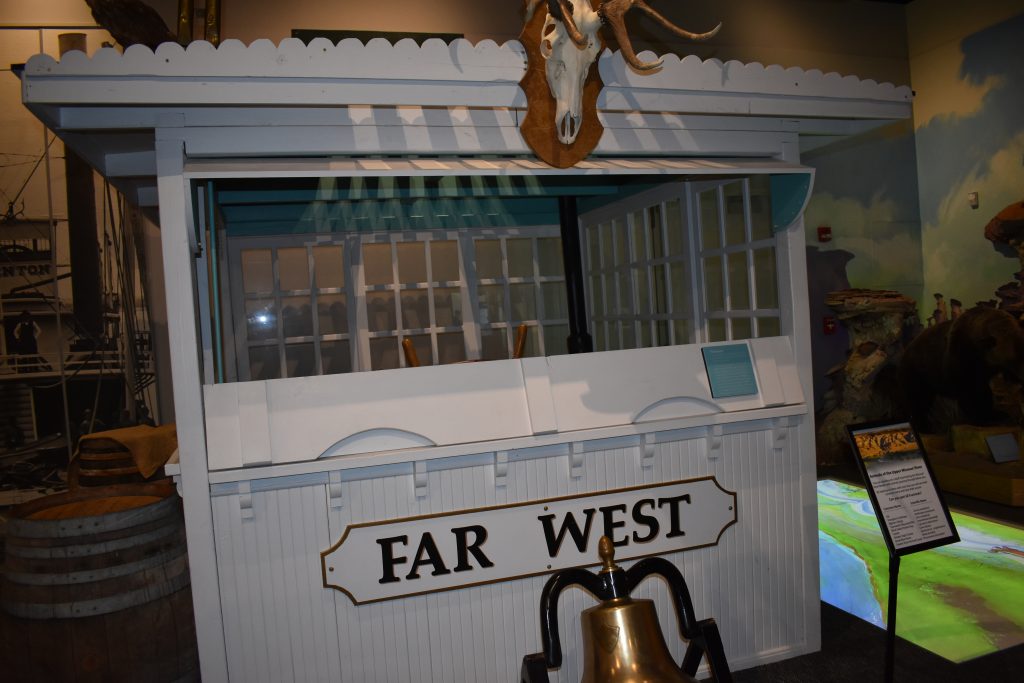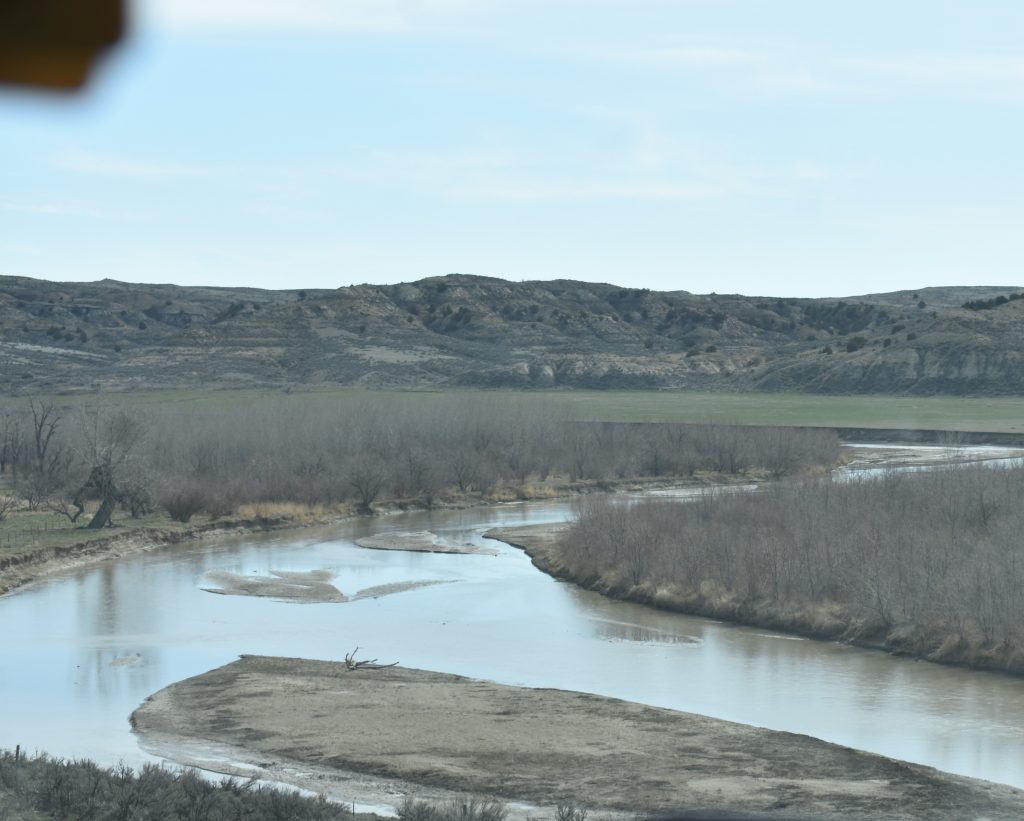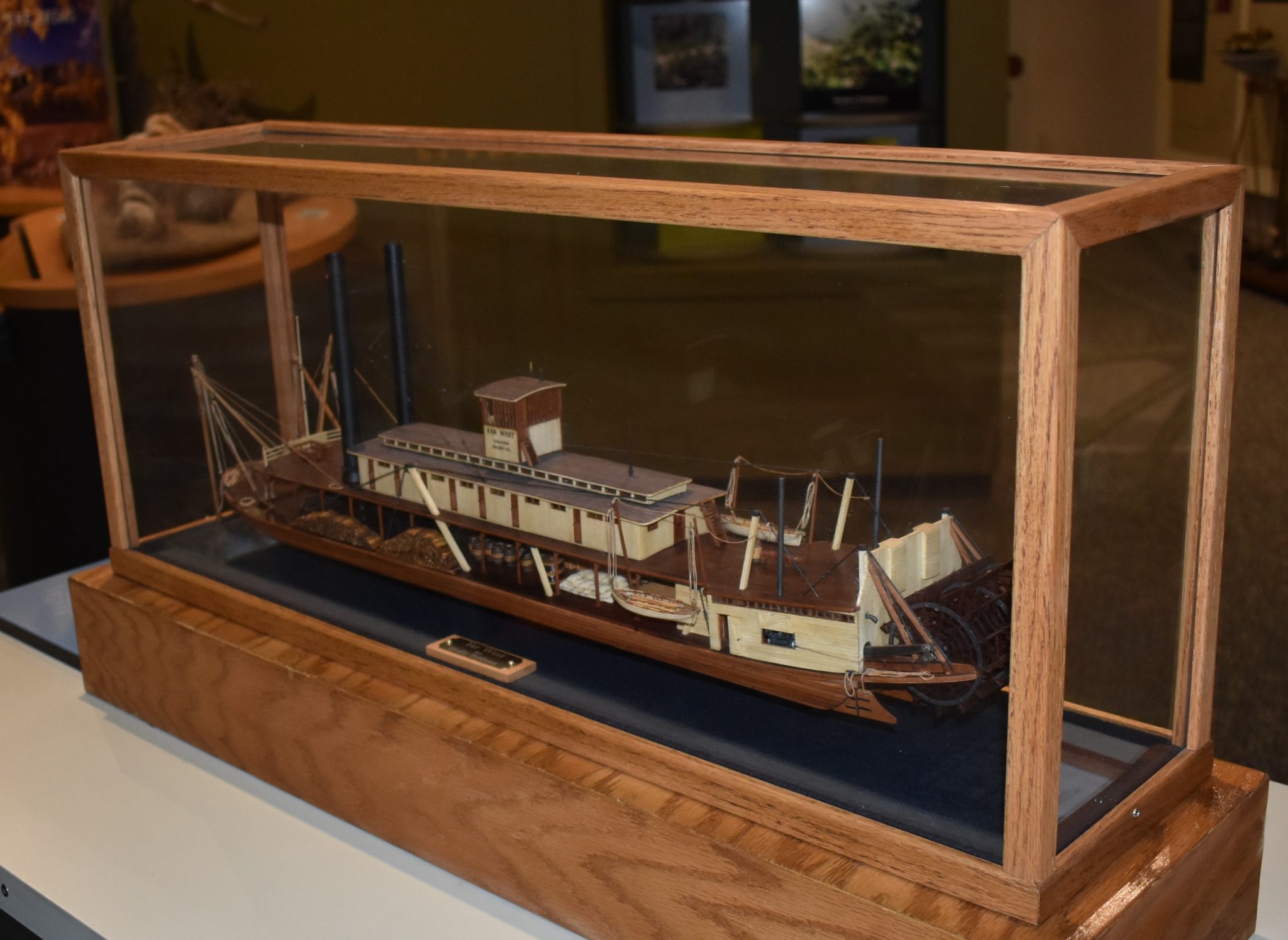A replica of the steamship, The Wild West, on display at the Upper Missouri Museum, Fort Benton, MT
In the early and mid-1800s, steamboats traveled up the Missouri, Yellowstone, Big Horn, Tongue River, and northern Powder River. Steamboats supplied the peacekeeping army on the plains and, after the Battle of Custer, brought the wounded from Reno and Benteen back for treatment.

Steamers, including a side wheel (a paddle on each side) and a stern wheel (paddle at the back) and the interior, with the paddle below, are used in the United States from the Clermont, Robert Fulton’s steamboat on the Hudson River in 1807 proved the viability of the steamship.
Many were used on the Mississippi River to transport passengers, cotton, and other cargo across the river. In 1819 Major Long built a steamship to explore western waters and named it the Western Engineer.

In an article from Laramie Weekly Sun, May 20, 1875, he describes the “dragon boat”.
The explanation of an Indian. In 1818-1819, Major Long of the United States Department of Surveying Engineering built a steamer to explore western waters up to Yellowstone, naming it Western Engineer. On the stern extending from the keel was the image of a huge serpent painted black, its mouth red and its tongue the color of hot coal; steam escaped through the mouth of this image. The Indians looked at him with great wonder and amazement. They said it was the power of the Great Spirit and said the great serpent carried the boat on its back. Some were afraid to approach the machines. The liner was commanded by Lieutenant Swift. Although not fast, but as a means of exploration, it was successful. She was a side-wheeler and the first to climb the Upper Missouri.
Native Americans saw the steamships bringing settlers and soldiers and were not happy to see them invade their territories.
The Frontier Index Laramie City June 20, 1868: indians – Indians are reported quite troublesome above Fort Buford and near Fort Benton. The The Sioux commit depredations and have hunted a considerable stock at the mouth of the Mussel Shell River. Several loggers had been killed and many boats had been shot down. The hostile Indians near Fort Rice made it known that they would make no treaty unless the government stopped steamboat travel and got all soldiers out of the country. There were, however, a large number of Indians in the vicinity of Fort Rice, awaiting the arrival of the peace commissioners.

Since that time, steamboats have been used on the Missouri to transport settlers and supplies. Two of the most famous were the Josephine and The Wild West. These two steamers, along with others, carried supplies to the troops and transported troops into the hunting country of the Indians.
In the Cheyenne Weekly Leader, May 27, 1876 – The steamer Josephine landed her first cargo of expedition supplies and three companies of infantry at the mouth of Glendive Creek on the Yellowstone, which will be General Terry’s supply base on the Yellowstone. Dispatches from Fort Buford indicate that three companies of infantry and two boats laden with provisions arrived at the mouth of Glendive creek, where Terry established a supply station for his own orders and those of Gibbons. Custer leads Terry’s advance with two companies of cavalry. No engagement has yet taken place, but Indian traffic lights are seen every night. The Indians are believed to number around 8,000 warriors.

And later in the year after Custer’s fight, from the Cheyenne Weekly Chief, Sept. 1876. Terry’s Camp on the Yellowstone River, Aug. 20, Via Bismarck, DT, Sept. 4.— Yesterday morning, General Terry transferred his command after eight days of rest, march twenty miles before camping. General Crook had changed sides the day before in search of better grass, traveling nine miles to Powder River, his camp of last night being about ten miles ahead of ours. Our route has been along that diabolical track which had hitherto drawn us to so little purpose, and which had been abandoned like a hopeless toil, the only reasons, it seems, for resuming it being that the two generals had no idea where the Indians had gone or what they were doing and that the campaign had proved a failure; so something had to be done for looks’ sake—that tHellos trail was the only Indian sign found and that the army could reach the agencies by this route as well as by another.
From the steamer, which was still waiting near our last camp, after meeting the Josephine and the Yellowstone, which were ascending, forty miles below, Glendive Creek, over which the two ships were pulled by Indians, a soldier was killed— Several small groups of Sioux were seen at different points on the north bank of the river, but only one of them came within range and they quickly withdrew before the sharp fire of the boats, one type falling as s he was hit hard. Just above here, the Josephine picked up a white man who called out to her. With another he had deserted the small garrison at Glendive Creek and had been surrounded by Indians, his companion killed, scalped and mutilated, and himself seriously wounded in the arm. Crawling between rocks, he lay in the pouring rain for two days and two nights, the Indians shooting at him from time to time and evidently waiting for him to starve.
In the LaramieDaily Sentinel, City of Laramie,Thursday morning, SEVEN. 7, 1876. September. 5.- Intelligence by means of Bismethe ark is that oNThe31st of augustst, crook was close Glénotdlve, south of the youlowstone, on the way at Glendive for supplies. Terry was on the north side of the Yellowstone, 15 miles below Glendive, heading towards Missouri. EEight kilometers below him, the Josephine saw a large fresh track, leading north, which Terry should have sa truck.
September 1st. The Josephine is reporting thirty inches of water in the Yellowstone on the 30th, with fifteen inches on the rapids, which it has cleared at this point. The Far West is above the rapids and will winter in Yellowstone.
After the Battle of Custer, the Wild West made a historic run to bring the wounded back to Bismark for treatment of their wounds.

In the Cheyenne Weekly Lchief – JJuly 15, 1876 The troops treated the wounded, buried the dead, an/a returned to their base for supplies and instructions from Gengeneral of the Army. Colonel Smith of General Terry’s staff visited Fort Lincold with the dispatches and with the wounded, 85 in number, except Three who died on the way, on the Far West, who left the mouth of the Great Horn at 12 o’clock the Monday morning, arrival there, traveling 900 miles per steam in less than 36 hoursrs.
One of the survivors loaded onto the Wild West was the sole survivor of Custer’s fight.

In a Sheridan Post-Enterprise, the article said that the only survivor of the fight against Custer was Comanche, Captain M. W. Keogh’s clay-backed gelding.
Comanche was found seriously injured at the site after the battle. HJ Nowlan of the Seventh, recognized Comanche, sent him on the steamer “Far West” with the wounded at Fort Lincoln, near Bismarck. N. Dak., where he was treated.
Comanache became the symbol of the Battle of the Little Big Horn and had a home at Fort Meade, SD, and later Fort Riley, Kansas. He lived to a ripe old age, dying in 1891, at nearly 30 years old.
After the Battle of Custer, more settlers came to the Yellowstone Valley to settle, and steamboats could play a vital role in helping farmers by transporting their goods to market and bringing goods from abroad .
In the VSHello Devery day Lreader, AApril 19, 1878 – Jointment Rriver JOkay : Jhe Yellowstone Valley is the last best heritage of our people have, to make houses for themselves. Not this there can be as productive thenotd elsewhere, but it combines more advantages, looks more like the house of those comcoming from the east oF Missouri, and while the season navigation on the river may be short, it will be of incalculable value athe advantage of shipping productions from the country, and bringing in supplies from abroad. The only crop planted here last season demonstrated that the the soil will produce in abundance the small cereals, potatoes, cucumbers, melons, and in fact all kinds of vegetables. This is a paradise of sknock man.
The head of navigation on the Yellowstone River is a disputed point, with some claiming Baker’s Battle Ground, about 65 miles above the mouth of the Big Horn, while others stop at the foot of Clark’s Fork Bottom, ten miles higher. , and shout “Eureka”. This is well known; steamships like the Western, the Fanehon, etc. arrived as far as Sherman, and it is further known that the Josephine overcame all difficulties and went about a hundred miles above. Reason and experience teach that above the confluence of two great rivers there is less water, and that their navigation is more difficult than below, unless the bed of the river is more confined: this is not the case for the Big Horn or the Yellowstone.

Travel along the Missouri, due to sandbars, irregular river depth, driftwood, and other snags, made travel often slow and sometimes dangerous. With the advent of trains, steamboat travel declined, as trains did not depend on waterways and travelers could take a more direct route.
But, for many years, steamships played a role in the Plains Indian Wars and the settlement of the west.

